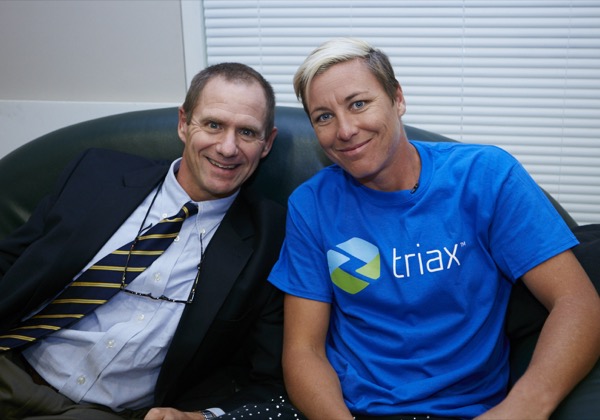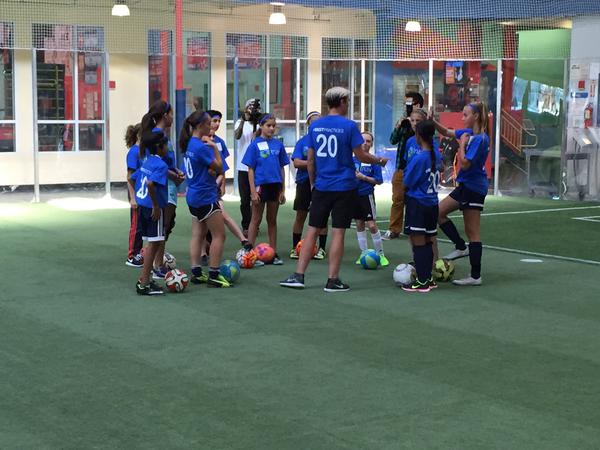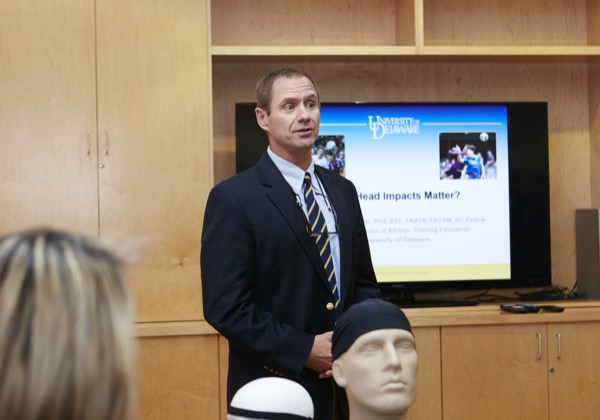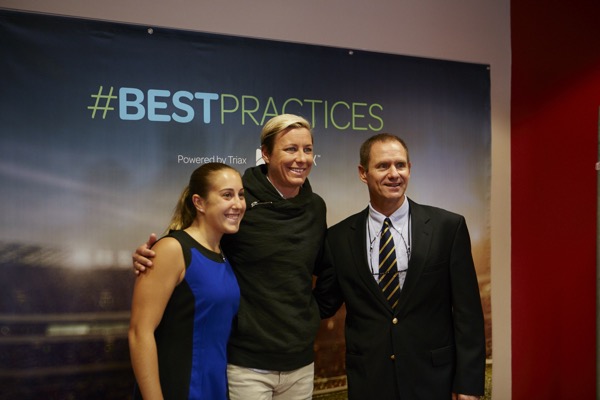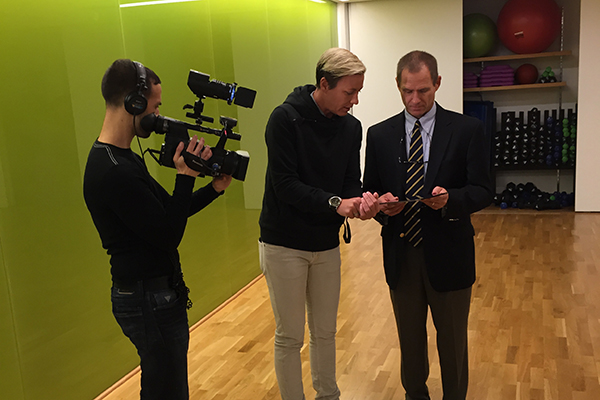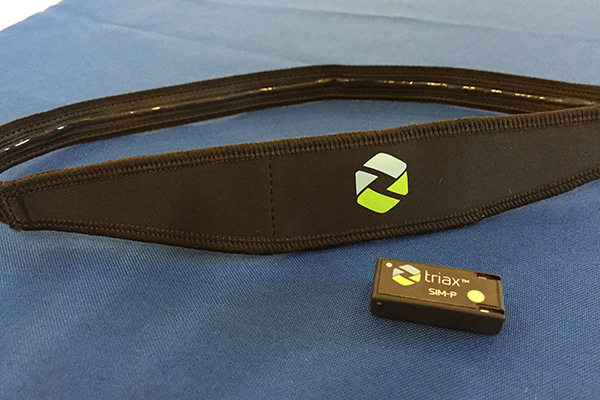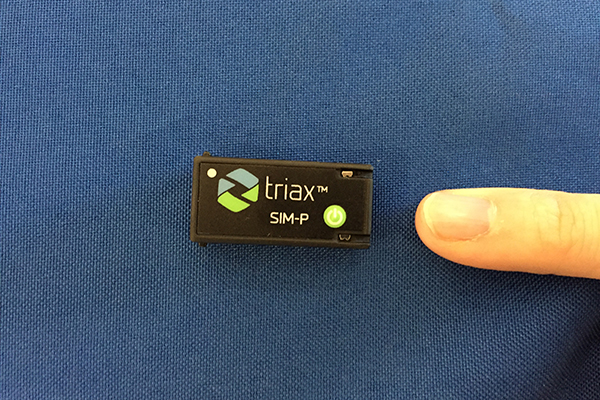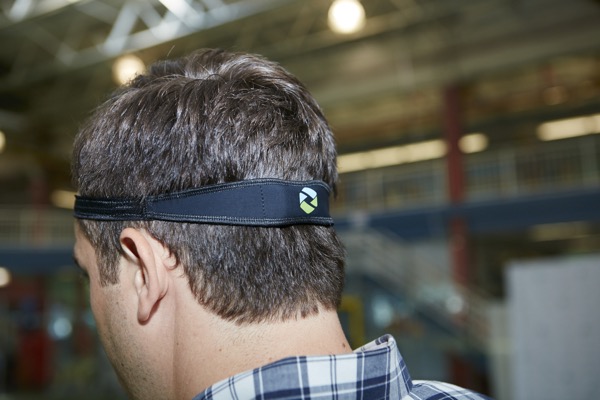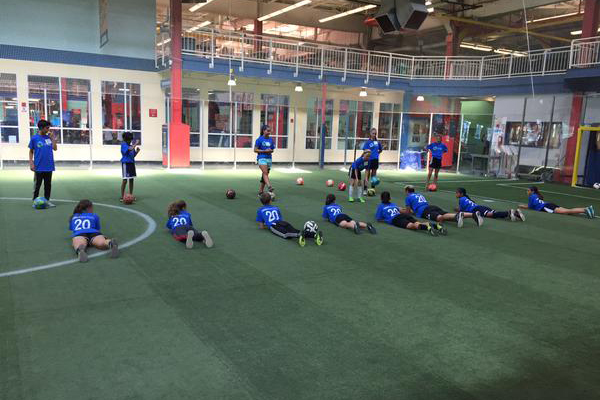Using your head
UD concussion researchers featured in media day with Triax, Abby Wambach
8:55 a.m., Oct. 15, 2015--The University of Delaware’s Tom Kaminski, professor of kinesiology and applied physiology, recently took part in a concussion media day with Triax Technologies in New York City. The day included interviews with Fox News, a lecture on head impacts in soccer and demonstrations at The Sports Center at Chelsea Piers in Manhattan.
Kaminski was featured with FIFA Women’s World Cup champion Abby Wambach of the U.S. national team, considered to be the most prolific header in the women’s game. The pair are old friends from their days at the University of Florida, where Kaminski was an athletic trainer and Wambach was the star player for the national champion Gators.
Research Stories
Chronic wounds
Prof. Heck's legacy
Kaminiski’s research on heading in soccer, which includes 13 years of data at UD, actually began 20 years ago with Wambach’s team.
The forward became focused on the issue of head impacts in soccer after sustaining a concussion while playing with the professional Western New York Flash in 2013.
“My concussion wasn’t from me heading the ball; someone cleared the ball straight into my head,” explained Wambach. “I told the referee I was OK when I wasn’t.”
Both Wambach and Kaminski are advocates for taking the decision to continue to play out of the athlete’s hands.
For athletic trainers, new technology can help signal an athlete who had a hard impact, so athletic trainers can keep an eye on her and perform a concussion assessment when needed.
The University of Delaware was the first to pilot a new measurement tool, the Smart Impact Monitor (SIM) from Triax Technologies. With a small chip strategically tucked into the back of a headband, the monitor, also known as an accelerometer, relays information on the G-force of impacts right to a phone or tablet — extremely useful information for athletic trainers, researchers and parents alike.
When paired with the visual observation and baseline testing that Kaminski has used on athletes since the late 1990s, the monitor allows a deeper level of analysis.
“These accelerometers monitor the total number of impacts and the magnitude of those impacts,” said Kaminski, who is director of the Athletic Training Program at UD. “We can analyze trends to hopefully make practices and games safer.”
During the media day with Triax, Kaminski was accompanied by Jaclyn Caccese, a doctoral student in biomechanics and movement science who is studying soccer heading in collegiate, high school and middle school athletes.
“The Triax accelerometers are an important piece of the puzzle,” said Caccese. “This data cannot be used to diagnose head injuries during games, but it does provide us with key information regarding the impact.”
UD uses the sensors to compare players by position, the type of impact (e.g., pass, clear, shot) and the type of drill. While accidental head impacts are bound to occur, purposeful heading is an important and vital skill in soccer and learning the right technique is a crucial step.
“You want to force impact on the ball; you can’t be timid,” explained Wambach, who spent time teaching heading technique to young players in-between media interviews.
With 38 million U.S. children playing contact sports and the number of concussions ranging between 1.6 and 3.8 million annually, concussion research and education must continue to move forward.
“Let’s leave the game better than when we started, and change player safety from a hot topic to a call to action,” concluded Wambach.
Article by Dante LaPenta






